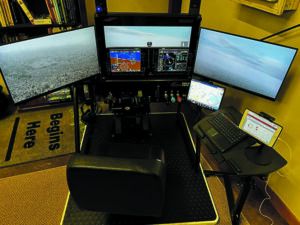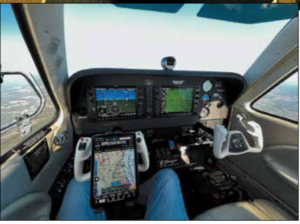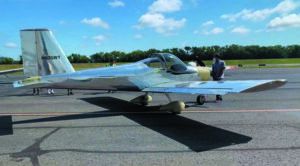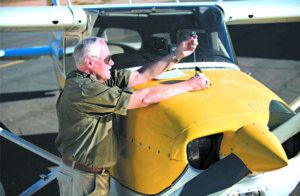Over the past year or so we’ve been getting plenty of reports from pilots slapped by the sobering reality that the current insurance market has sunset their flying career. The trend is pretty clear: These are pilots north of 70 years old—many flying twins, turbines and even small tailwheel airplanes—who on paper have spotless flying records, but are deemed uninsurable.
These aren’t just amateurs. We’re talking ex-military pilots, instructors and transport captains with long-standing insurance coverage who aren’t eligible for renewal. But the news isn’t all grim.
We’ve also heard plenty of success stories from middle-aged pilots who have actually seen a reduction in their premiums—and only slight increases when upgrading to more complex machines.
As an update to the Insurance Roundtable article in the November 2020 issue of Aviation Consumer, here’s a market update for a sector hit the hardest: senior pilots.
AGE MEANS SKILL, RIGHT?
Face it, if you’re a well-worn aviator who has reached the golden age of 70 or older without so much as putting a scratch on an airplane, you’ve either got a ton of skill or luck (or maybe both). But for the majority of folks in this category—and we all know some of them—they’re pretty darned good sticks. They’ve got weather wisdom, stick and rudder skills and simply know how to fly their aircraft—and know when to keep it parked. We know retired fighter pilots who served hard time flying combat, retired check captains with distinguished careers in the majors and retired law enforcement pilots who can’t get coverage for flying their light twins. But experience might not matter to an underwriter sitting at a desk eyeballing the policy renewal.

Some of the research concludes that older, more experienced pilots perform certain tasks better than younger pilots with less experience. But, it’s not that cut and dry.
How much more experience? Perform how much better? Which tasks? It’s hard to put a number on it. And putting numbers on things is what underwriters are paid to do, so most of them are left with whatever overall accident statistics are available and the experience their own company has with pilots of different types of airplanes and of varying ages. And since pilots age very differently—and the underwriter rarely gets to meet them—how can she make any kind of accurate judgment about who to offer insurance to, and how much to charge for it?

When looking at older pilots, underwriters are at a little bit of a loss. There is very little literature or research that is aimed directly at older general aviation pilots, although statistical data on insurance claims for bent aircraft counts for something, or maybe a lot.
Still, what research has been done in this area has generally been aimed primarily at air carrier pilots who by law max out at 65, and tells us little about the septuagenarians and even octogenarians who are becoming more common in general aviation. The available evidence is confusing and even contradictory. Many of the studies that are based on accident analysis include only NTSB-reportable occurrences, which are only a fraction of all aircraft insurance claims. And how do we tell whether a gear-up landing is just an “oops” or is caused by age-related factors? Plenty of youngsters have committed the $60,000 slide, and plenty of younger pilots do some pretty stupid things. We read about them all the time in our NTSB accident scan research for all kinds of aircraft.
Now, as it’s always been, the primary factor that aviation underwriters look at when offering a policy (or sending it for renewal) is the fit between the pilot and aircraft. How we’ll is this pilot equipped to fly this type of aircraft, given his or her experience and training? If the pilot is making a transition and is not particularly we’ll equipped, what sort of training can make him or her proficient and safe, and how can it be provided? What steps can be taken to measure its positive effects? The age thing isn’t easy to quantify.
Worth mentioning is that over the years, insurance pros have consistently told us that there’s a correlation between pilot age and the slightly higher accident rate for their older clients. What’s that mean? The obvious. If you turned 70 ten years ago, and recently belly-whopped your Bonanza, there’s a pretty good chance your insurer is going to think twice (or once) before renewing your policy.
THE LOSSES THEY SEE
Remember that much like automobile and life insurance, there are age bands in aviation insurance, too. We followed up with Marci Veronie at Avemco Insurance Company, who told us that at least some of the turmoil that the market was facing a year and a half ago is starting to ease.
But it’s worth noting that Avemco doesn’t insure turbines, and it doesn’t write smooth policies. But it has taken on clients from other insurers, and we’ve heard from some of them in our surveying. In our estimation, Avemco reels in high marks for customer satisfaction, and pilots 70 and over are considered “seniors.”
And for that crowd (and pretty much anybody in this current market), Veronie had good advice to stick with one insurance company (even if it isn’t Avemco), because as we’ve known for a while, loyalty counts. On the other hand, we’ve heard from pilots who have been loyal, but were dropped anyway. But sticking with the same insurer is the better plan.
“If you work with an insurance agent, you have to make sure they are keeping you with the same company,” she told us. That’s a good point because your agent may be trying to get you slightly better rates (often by your own demands), but hurting your chances of long-term insurability by jumping carriers.
Avemco’s Veronie said during the roundtable discussion that insurers have years of data showing that aging pilots are bending airplanes pretty much for the same reasons they always have. The short list includes gear-up landings, fuel exhaustion wrecks and runway loss of control—all the stuff we have repeatedly seen in NTSB reports. They’ll never change.
Interestingly, Veronie told us she’s seen a recent increase in taxi-related crunches, although not necessarily just by older pilots. Unless you’re a repeat offender, these kinds of claims generally aren’t grounds for cancellation. After all, that’s why we buy aircraft insurance.
But not all buyers are taking advantage of potential discounts. Unfortunately the doom and gloom of a hard-nosed aircraft insurance climate has lots of pilots (especially aging ones) grateful to even have insurance, let alone ask for savings. Veronie told us that Avemco could offer safety rewards discounts to pilots who earn new ratings and continue their training. This isn’t just at Avemco—other insurers have similar incentives—but you won’t always know about them unless you ask. Ask what you can do, if anything, to bring the rates down.
Speaking of asking, insurers we talked with made the point we’ve been preaching for years: Don’t buy any aircraft without first getting an insurance quote. It seems like a basic point, but it doesn’t always happen that way. Just because you have insurance on your old Cessna 182 valued at $75,000 doesn’t mean you’re insurable in a newer one valued at $500,000 or more, as one example.
“If a customer has been with Avemco for years and years, in general we’ll continue to cover them as long as they pass the medical exams and stay current in the airplane in which they’re insured,” Veronie said.
BUILDING AN AIRPLANE?

One thing we know for sure is that since the start of the pandemic, there are more pilots building experimental kit aircraft than ever before. Some are aging pilots who have been building them for a long time and are finally getting close to kicking the tires and lighting the fire. That doesn’t come without challenges. For an update on the experimental market, we talked with Scott “Sky” Smith at Sky Smith Insurance in Iowa. Smith has been specializing in brokering policies for experimentals since 1985.
“Rates seem like they’re stabilizing for some, while older pilots are still having issues insuring complex models,” Smith told us. A policy for a Skyhawk or Cherokee may be doable for a 70-something-year-old pilot, but maybe not a chance for the same low-time pilot wanting to insure a tailwheel Sportsman, for example. The state you live in could also limit the insurance you can or can’t get for a personal airplane.
Smith echoed what we heard from other brokers and builders and that is models from Van’s and Zenith, to name two, are highly regarded in the insurance market. Other stuff—maybe not. “Buy or build anything that the insurance company considers exotic (including experimental turbines), rare or from low production, and insurance companies probably won’t even touch it,” he told us.
Smith—one of the best-regarded brokers out there, in our view—starts counseling his aging clients early, and his advice is to them is to be where they want to be from an insurability standpoint by age 69, especially if you want to buy something rare or exotic.
Some companies, as we’ve heard firsthand, will only insure 70-something-year-olds if they fly with another qualified (and younger) pilot. Some also require an annual flight physical and an annual flight review at 70.
OLD PLANE, OLD PILOT

Smith said some companies are pretty cautious insuring older pilots (particularly in tailwheel airplanes) who have low time in make and model, even though they’re high-time pilots. The other snag is that companies are putting limits on insured value. Just because you have $350,000 into your kit project doesn’t mean you’ll be able to insure it for its full value.
Speaking of value, the parts availability issues for some older airplanes are trickling down to the insurance market. That means you’ll be paying more out of pocket for repairs. In the insurance world this is called a component parts schedule, which means insurers will only pay out a percent of the loss of a flap or wing or tail section, as some examples. This is happening for experimentals and certified aging aircraft.
“These days it’s not just the age of the pilot, it’s the age of the aircraft that insurers are concerned with,” Smith told us. We’ve heard of some companies that stopped insuring Cessna piston twins older than 30 years. Guess what percentage of the Cessna twin fleet that includes?
Smith also pointed out that it is taking a while for insurance underwriters to sync up with the skyrocketing value of used aircraft. Just because someone will hand over $100,000-plus for your old Skyhawk doesn’t mean your insurer will write a policy for that high of a limit. They’ll likely ask what improvements you’ve made to the aircraft, including the big ones like avionics upgrades. Plan on providing proof of equipage and the time that’s on the engine.
YEAH, NO
Our sense is the market is getting a bit easier than it was two years ago, but only for the right combination of pilot/aircraft age. That means senior (and inexperienced) pilots should still expect major rate increases or are being turned away when trying to insure high-performance aircraft.
The key for seniors, we think, is to be realistic and downgrade the aircraft while you’re still insurable. And fly and train as much as you can.





